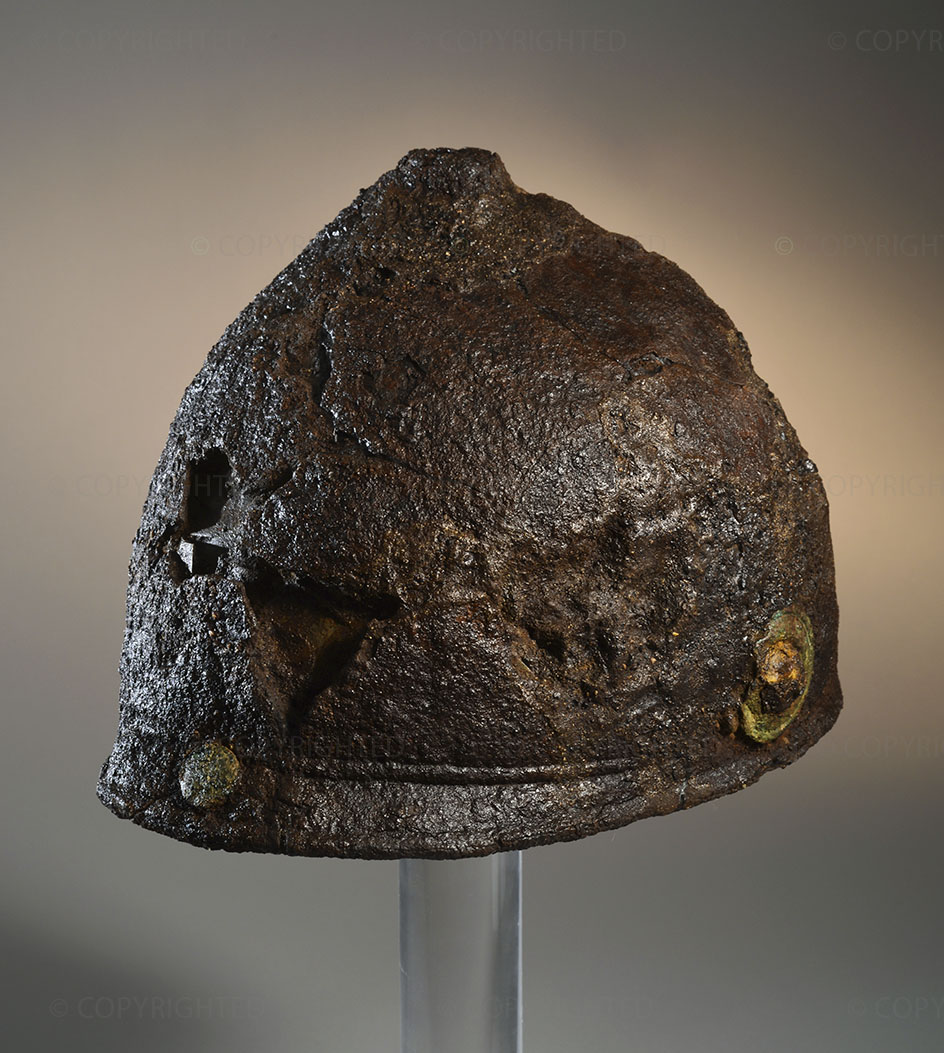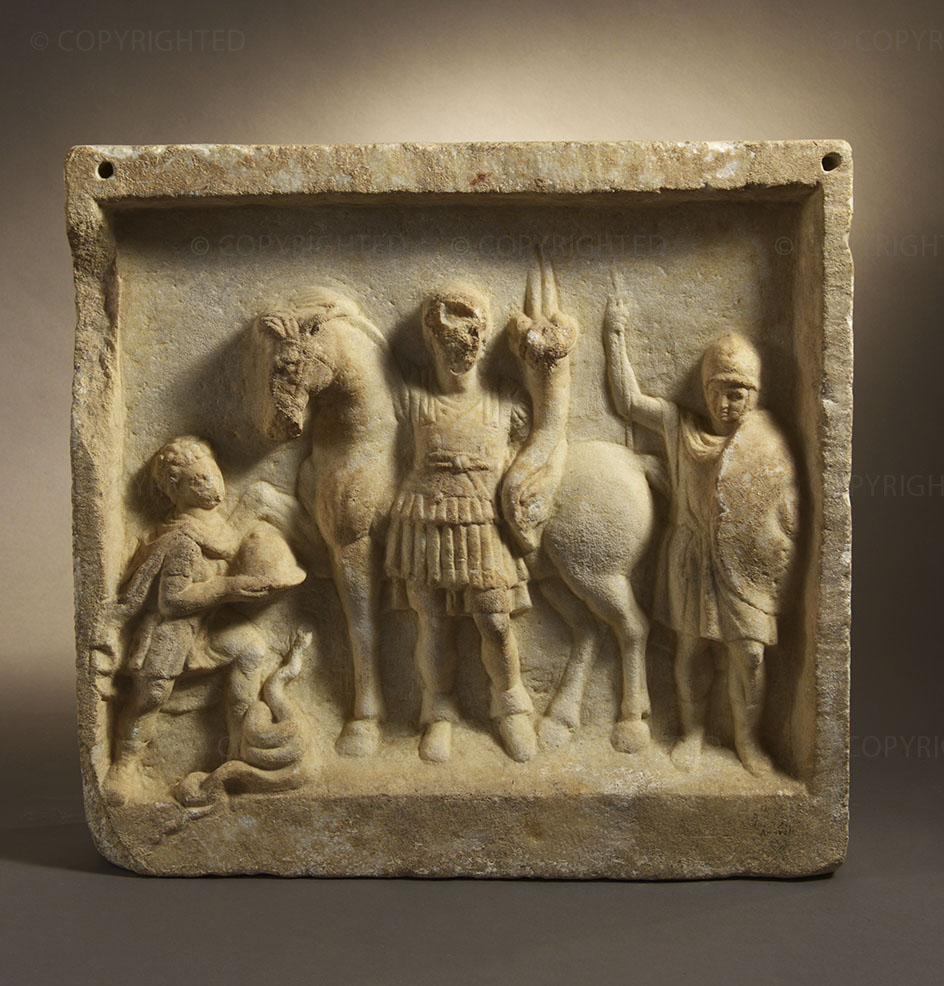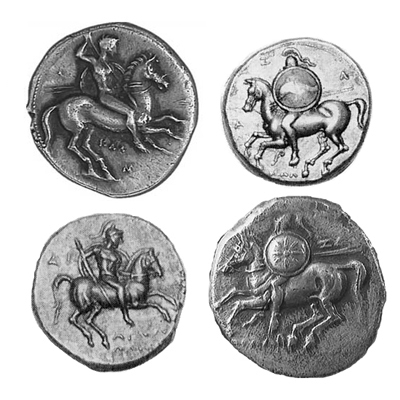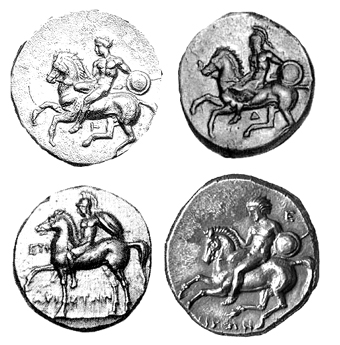LAKEDAIMON ROSTER
Sphendonetai
Akontistai
Toxotai
Hippakontistai Skiritai
Akontistai Skiritai
Hoplitai Skiritai
Hoplitai Lakedaimonioi
Hoplitai Spartiatai
Hippeis Spartiatai
Kleomenes Reform Troops (227 b.C.):
Hoplitai Lakedaimonioi (reformed)
Diskilioi
Nabides Reform Troops (207 b.C.):
Hoplitai Lakedaimonioi (again refomed)
Thyreophoroi Kretikolakedaimonioi
Peltastai Kretikolakedaimonioi
Epibatoi Kretikolakedaimonioi
Akrobolistai Hippakontistai Tarentinoi
__________________-
Psiloi (skirmishers) in Spartan society were actually recruited among Helotai (Helots), the servile, almost slave-like part of Spartan society.
Being the descendents of the previous Achaen inhabitants of Laconia, Helots were until III b.C. strictly apart from Spartan society. Althought, they could gain freedom and became “Neodamodeis” (“New citizens”), with the same rights of the Perioikoi (middle class) if they served in the Spartan army for some times.
Sphendonetai
Akontistai
Toxotai
The Skiritai were a pastoral people of Arcadian stock, probably related to Helots, that lived in the impervious region on the border within Spartan territory and Arcadia.
Even if for Spartan society they were of the same social class of the Perioikoi, somehow in the classical accounts they were distinguished from them.
They used to have different roles in the Spartan army: as Elite Skirmishers, preceding the hoplites and scouting the territory both on foot and on horse, having also the duty of the night guard of the encampment.
Their skirmish cavalry was very praised, and classical authors states it was as deadly as the skirmish cavalry of steppe peoples (Xenophon, Cyropaedia, IV, 2).
Skiritai also formed one specific battalion of hoplites, that always was deployed on the left wing of the battle line (actually the most threatening position in the hoplite formation).
Akontistai Skiritai
Hippakontistai Skiritai
Hoplitai Skiritai
In the III b.C. Spartan society undergo to great changes.
Even during the second part of IV b.C., due to economic, social and especially demographic decrease, the number of proper Spartiatai (full citizens) fall exponentially to sheer percentage, and according to Plutarch in 250 there were just only 700 Spartiates in Laconia.
As a result, Spartan army became actually formed with an increasing percentage of middle class citizens, the Peiriokoi , that became organized in mixed morai (military unit) with the Spartiatai, and no more in different units as in the past.
Hoplitai Lakedaimonioi
Hoplitai Spartiatai
These hoplites are the last remnants of pure Spartiatai families of the most noble stock, elements of the highest Spartan aristocracy.
Some elements of their equipment is outdated, just to represent their conservative attitude.
Spartan Citizen Cavalry was quite ineffective, and actually “Spartan cavalrymen were recruited among the weaker, not war-like hoplites”, Xenophon, Hellenikè, VI, IV, 11
Actually, these cavalrymen are nothing more than mounted hoplites, and even if recruited among the richest Spartiatai, are of less quality if compared to other Spartan Hoplites.
Hippeis Spartiatai
Kleomenes Reform (227 b.C.):
After deposing the Council of the Ephors, Cleomenes used the full power thus obtained to implement the total remission of debts, and the distribution of 4,000 lots of land equal to as many new citizens, chosen from the Hypomeiones(Former Spartiatai belonging to the who had been excluded from political rights for insufficient income) and even to those Perioikoi and Helotai, called “Mothakes”, that “have been raised in the Spartiatai way” (Plutarch, Parallel Lives, Life of Cleomenes, 8).
Moreover, to counter the economical crisis of Sparta, when raising a new army he implement for his newest troops the Macedonian equipment, less expensive than the hoplite one, forming sarissophoroi corp of the Diskilioi, composed by Mothakes and Cretan mercenaries to whom he gave full citizenship.
(M. Daubies, Les combattants laconiens à Sellasie, Bruxelles 1975, pp. 383- 392, and "Historia" 1971, pp. 665- 695).
Hoplitai Lakedaimonioi (reformed)
Diskilioi
Nabides Reform (207 b.C.):
Nabides actually followed the path of Cleomenes, and opened citizenship to all the mercenaries (mostly Cretan) that, at the time were actually half of the Spartan army.
He formed stable battalion of formerly Cretan mercenaries, now full Spartan citizens, and even a fleet (composed almost by formerly Cretans, too).
Hoplitai Lakedaimonioi (again reformed)
Thyreophoroi Kretikolakedaimonioi
Peltastai Kretikolakedaimonioi
Epibatoi Kretikolakedaimonioi
Along with the opening of citizenship to Cretans and other greek mercenaries, the use of Tarentine cavalry became more and more common, like in other greek and hellenic armies.
To be noted "Tarentine" in this case is more a term that define a role on the battlefield than a real origin from Tarentum.
Akrobolistai Hippakontistai Tarentinoi









































 Reply With Quote
Reply With Quote






































 [/UR
[/UR








































